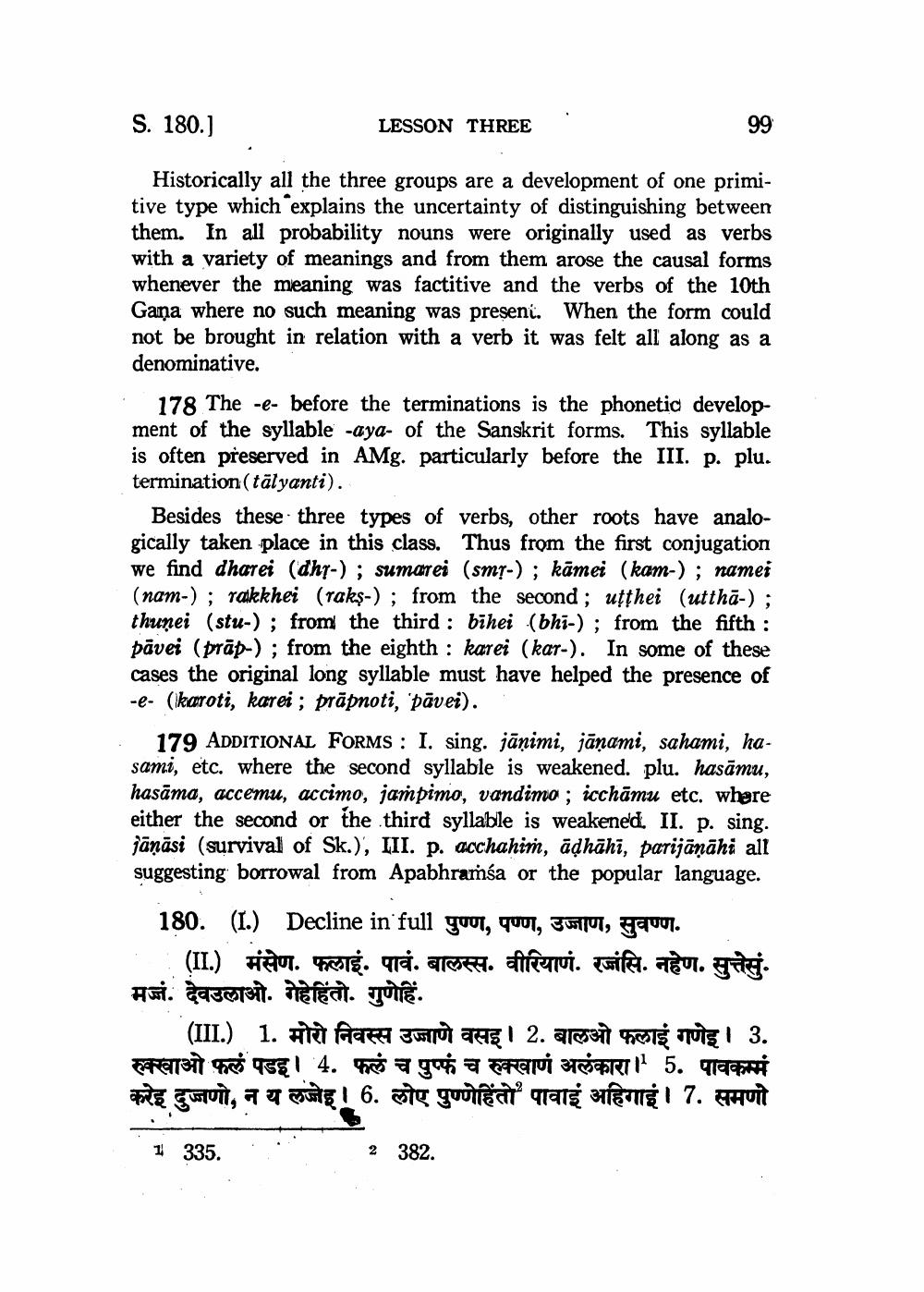________________
S. 180.)
LESSON THREE
99
Historically all the three groups are a development of one primitive type which explains the uncertainty of distinguishing between them. In all probability nouns were originally used as verbs with a variety of meanings and from them arose the causal forms whenever the meaning was factitive and the verbs of the 10th Gana where no such meaning was preseni. When the form could not be brought in relation with a verb it was felt all along as a denominative.
178 The -e- before the terminations is the phonetic development of the syllable -aya- of the Sanskrit forms. This syllable is often preserved in AMg. particularly before the III. p. plu. termination (tālyanti).
Besides these three types of verbs, other roots have analogically taken place in this class. Thus from the first conjugation we find dharei (dhr-) ; sumarei (smr-) ; kāmei (kam-) ; namei (nam-) ; rakkhei (rakş-); from the second ; uțthei (utthā-) : thunei (stu-) ; from the third : bihei (bhi-) ; from the fifth : pāvei (prāp-) ; from the eighth : karei (kar-). In some of these cases the original long syllable must have helped the presence of -e- (karoti, karei ; prāpnoti, pāvei). : 179 ADDITIONAL FORMS : I. sing. jāņimi, jānami, sahami, ha
sami, etc. where the second syllable is weakened. plu. hasāmu, hasāma, accemu, accimo, jampimo, vandimo ; icchāmu etc. where either the second or the third syllable is weakened. II. p. sing. jānāsi (survival of Sk.), III. p. acchahim, ādhāhi, parijānāhi all suggesting borrowal from Apabhraíśa or the popular language.
180. (1.) Decline in full gour, quul, Sout, gravur.
(II.) HAT. T. qraialska. atrami. Tritt. TEM. THE Ami. qasetit. NEEM. Jule.
(III.) 1. Ata Par SHIÙ 4931 2. apei set TUTE I 3. रुक्खाओ फलं पडइ। 4. फलं च पुप्पं च रुक्खाणं अलंकारा। 5. पावकम्म करेह दुजणो, न य लजेह। 6. लोए पुण्णेहिंतो पावाइं अहिगाई। 7. समणो
. 1 335..
2 382.




